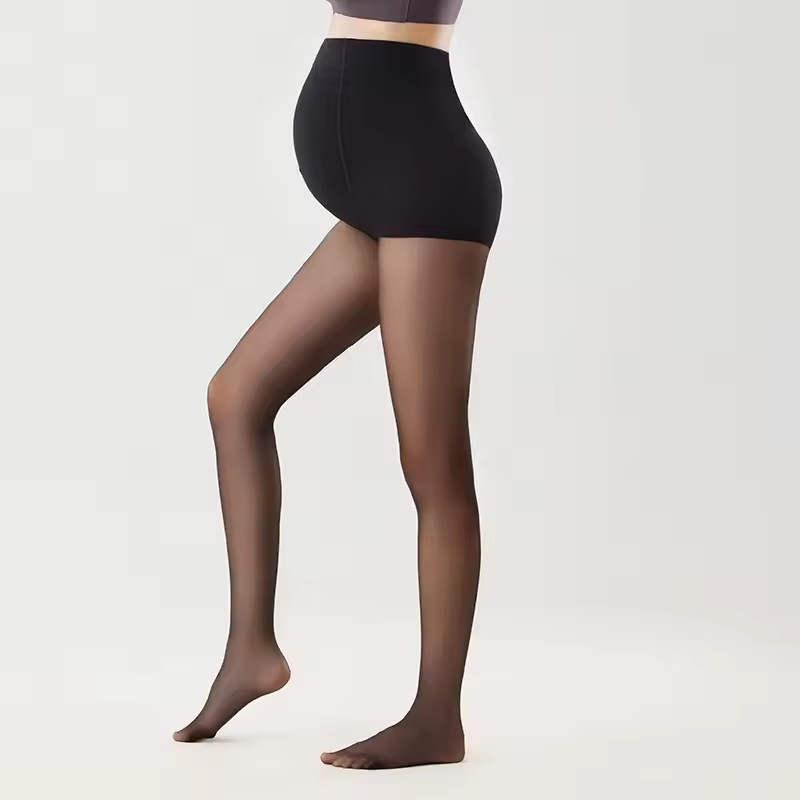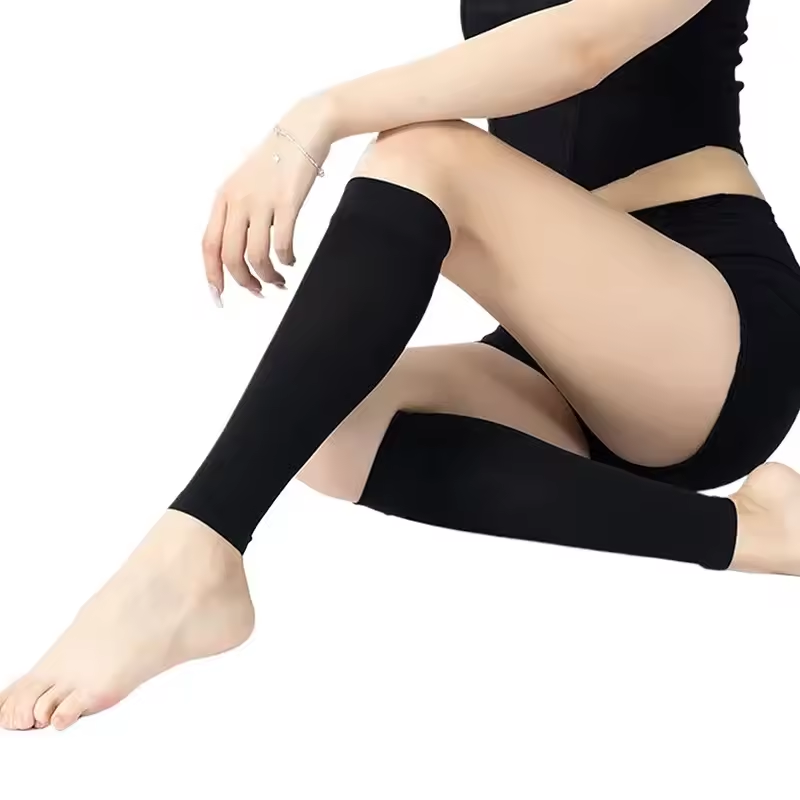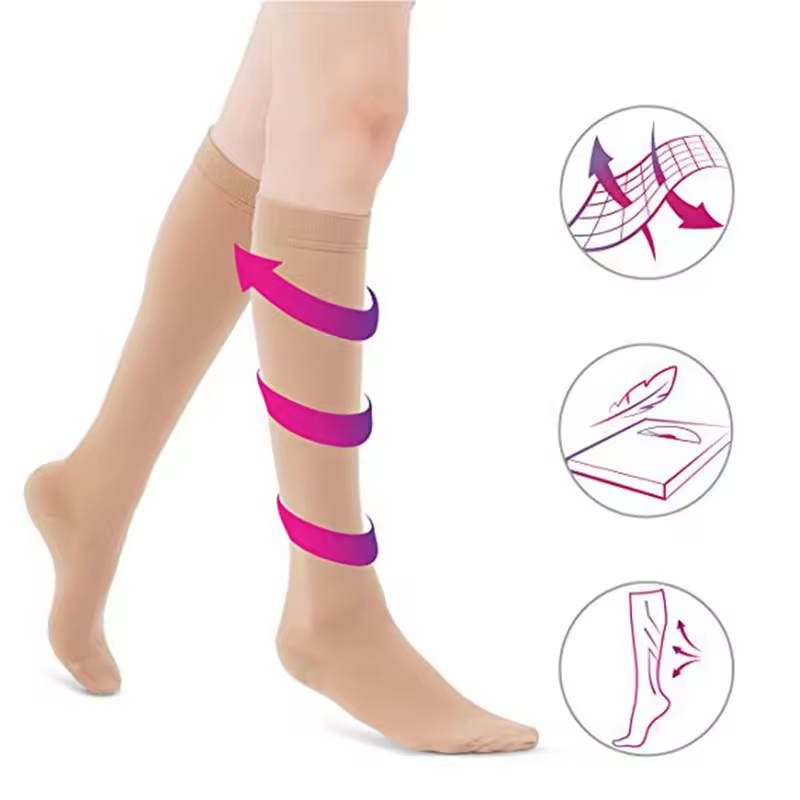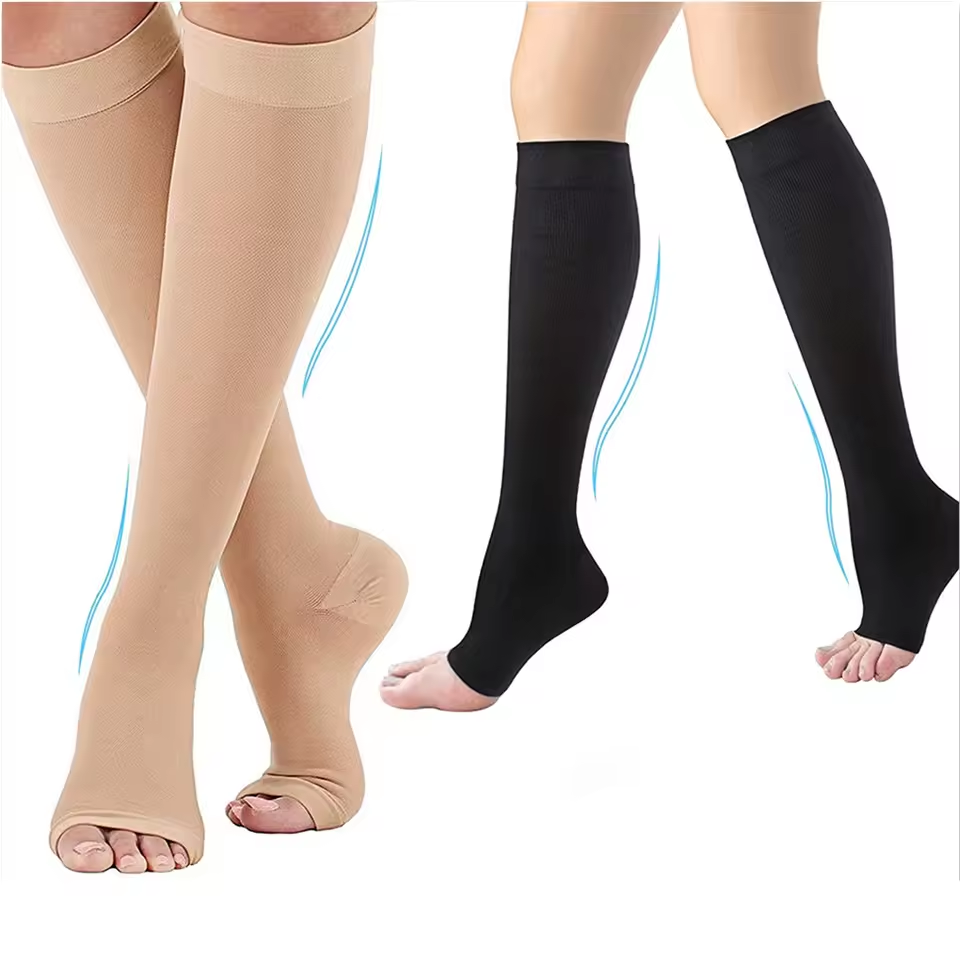What are Compression Socks?
Compression socks are specialized hosiery designed to promote blood flow. They fit snugly around the legs and apply gradual pressure to your veins and muscles. The tightness is strongest at the ankles and gradually decreases towards the knees. This design helps to push blood back up to the heart, reducing swelling and improving circulation.
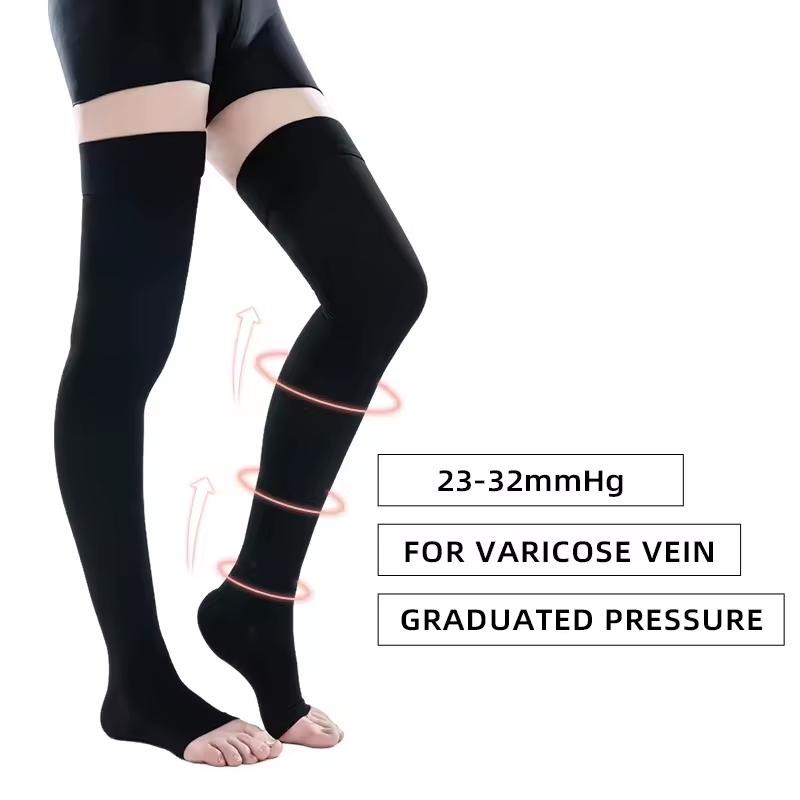
Typically, athletes wear compression socks to boost performance and speed up recovery. Yet, many others use them too, including people who stand all day at work, travelers on long flights, and individuals with circulatory problems. Even if you’re looking to improve your sleep quality, you might consider whether ‘can I sleep with compression socks’ is a good idea.
To be clear, these socks are not the same as traditional, everyday socks. They’re made with stronger elastics and come in different sizes and strengths, which are measured in mmHg (millimeters of mercury). The mmHg rating tells you the amount of pressure the socks will exert. It’s this variety that makes them suitable for different needs, whether for sports, medical conditions, or even sleep enhancement.
The Science Behind Compression Socks and Sleep
The concept of wearing compression socks to bed is grounded in science. These socks apply pressure to blood vessels. This encourages venous blood flow towards the heart. This process can reduce leg swelling and promote circulation. Good circulation is vital for regeneration and healing of tissues. This happens during sleep.
When you sleep, your body enters a restorative state. Blood flow is key to this process. Adequate circulation ensures that nutrients reach the body’s cells. It also ensures waste products get carried away efficiently. Compression socks aid in this by enhancing blood flow. This is especially true for individuals with circulatory issues.
Another scientific aspect is the reduction of blood pooling. This can happen when you’re inactive, like during sleep. Pooling can cause discomfort and disrupt sleep. Compression socks, by promoting circulation, can alleviate this pooling.
Lastly, the use of compression socks at night may help with the symptoms of restless legs syndrome. This is due to their pressure providing a soothing effect. This soothes the legs and may lead to better sleep. However, it’s important to note that this is an area that still requires more research.
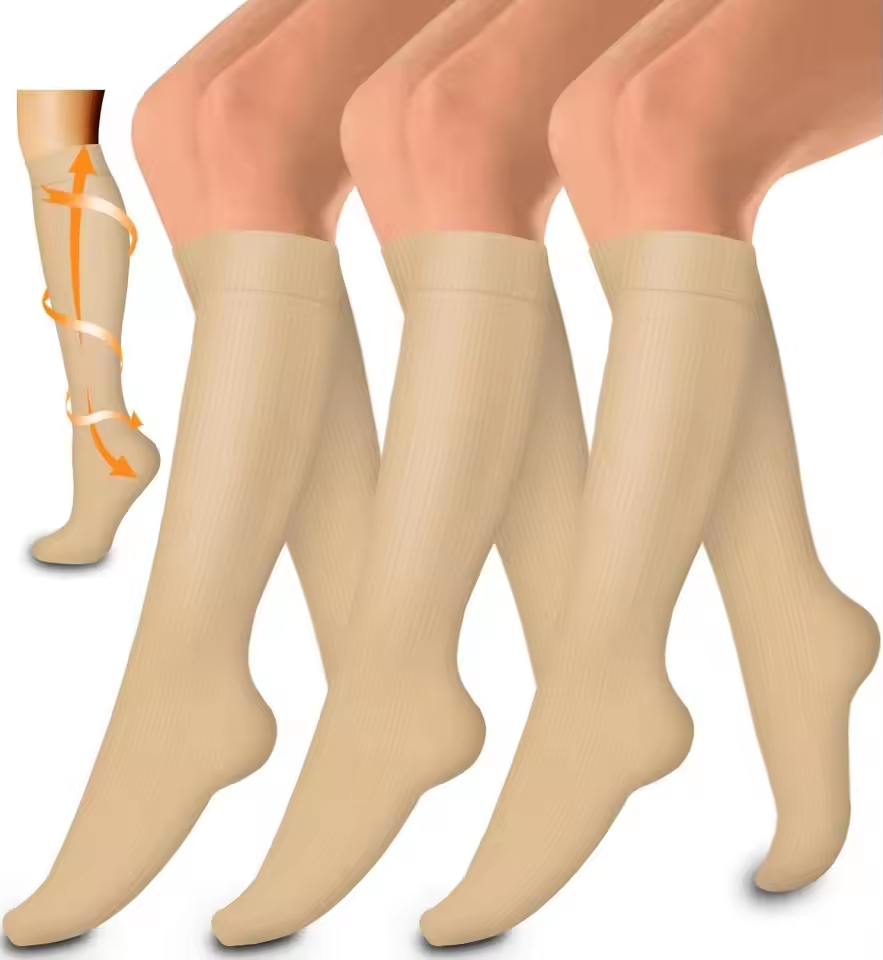 Benefits of Sleeping with Compression Socks
Benefits of Sleeping with Compression Socks
Wearing compression socks overnight comes with several potential benefits.
First, they may improve blood circulation during sleep. This is crucial for physical recovery.
Second, compression socks might reduce swelling in the legs. This is especially true for those who stand for long hours during the day.
Third, they can provide relief for individuals suffering from varicose veins. The gentle pressure can ease discomfort caused by this condition.
Moreover, users report a decrease in leg cramps when wearing these socks. Good circulation helps prevent the buildup of lactic acid, which often causes cramping.
There’s also evidence to suggest that compression socks might benefit those with restless legs syndrome. The pressure could lessen the symptoms, leading to better and more restful sleep.
Lastly, for frequent travelers, wearing compression socks may reduce the risk of blood clots during prolonged periods of inactivity. They could serve as a preventive measure for deep vein thrombosis.
Keep in mind these benefits often depend on the individual’s specific health conditions and the proper use of the socks.
Potential Downsides of Wearing Compression Socks to Bed
While considering the question ‘can I sleep with compression socks’, it is essential to assess not just the benefits but also the potential downsides. Wearing compression socks overnight does pose certain risks and discomforts that users should be aware of.
Firstly, overuse of compression socks can lead to skin irritation or breakdown. If they are too tight or worn for too long, they can restrict skin airflow. This can cause sweat accumulation, leading to rashes or infections. Ensure your compression socks fit well and don’t cause skin indentations.
Secondly, incorrect usage can have adverse effects. If you don’t apply the socks properly, you might not get the right pressure distribution. This can actually worsen circulation issues instead of improving them.
Thirdly, there’s a concern that extended wear might cause blood flow restriction if the compression level is too high. This is particularly risky for those with certain health conditions like peripheral neuropathy or diabetes. These individuals need to consult with a healthcare provider before sleeping in compression socks.
Lastly, while they may help with issues like restless legs syndrome, reliance on compression socks may prevent people from seeking more effective treatment. It’s important not to ignore underlying health problems. Always talk to your doctor if you’re experiencing persistent discomfort or sleep disruption.
In conclusion, while the potential drawbacks of sleeping with compression socks are notable, being aware and careful with their use can minimize these risks. Consider all aspects of compression sock use for sleep to ensure safe and beneficial results.
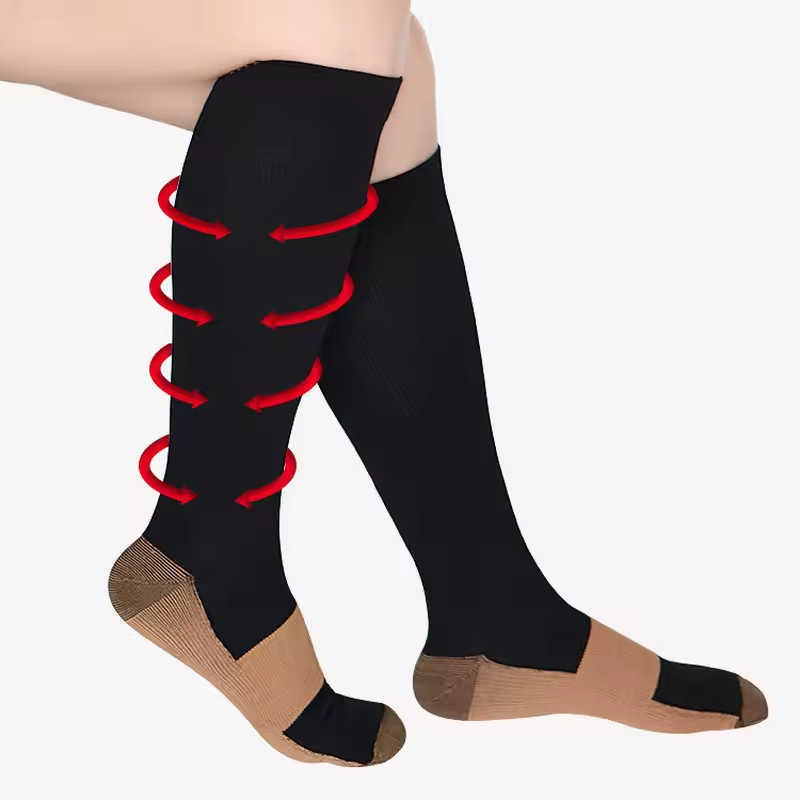 How to Choose the Right Compression Socks for Sleeping
How to Choose the Right Compression Socks for Sleeping
Choosing the right compression socks is key for sleep benefits. Consider these factors to pick the best pair.
Understand Compression Levels
Compression socks come in various pressure levels. Levels are in mmHg, a measure of pressure. Low mmHg suits light swelling and minor issues. Higher mmHg levels offer more support. They work well for serious conditions. But, don’t go too high without medical advice.
Consider Material and Comfort
The right material is crucial. Look for moisture-wicking fabrics. They keep feet dry all night. Check the sock’s texture too. It should feel comfortable against your skin. Avoid materials that cause itching or discomfort.
Get the Correct Size
Size makes a difference. Too tight, and they can harm. Too loose, and they won’t work. Make sure you measure your legs. Use the sizing chart. This ensures a snug fit without cutting off circulation.
Review Product Reviews
Other people’s experiences can guide you. Look at user reviews. They offer real insights into the product’s comfort and efficacy. High-rated socks often mean better quality.
Seek Medical Advice
If in doubt, ask a doctor. They can recommend the right type and level for you. They also consider any medical conditions you might have.
 Proper Ways to Use Compression Socks for Sleep
Proper Ways to Use Compression Socks for Sleep
When exploring the query ‘can I sleep with compression socks,’ knowing the correct usage is essential. Here’s how to wear them effectively for sleep.
Selecting the Right Time for Wear
Timing is important. Put on your compression socks 30 minutes before bed. This preps your legs for rest. Avoid wearing them all day. Your skin needs time to breathe.
Ensuring Correct Application
Apply them smoothly. Wrinkles can pinch the skin and cause discomfort. Start at the toes and work up, making sure the fabric is evenly exerted along your legs.
Combining with a Nighttime Routine
Include socks in your night ritual. Pair them with leg stretches or a warm bath. This soothes muscles and boosts the benefits of compression.
Gradually Increasing Duration
Don’t rush into all-night wear. Start with a few hours. Gradually extend the time as comfort allows. Listen to your body’s signals. Stop if you feel pain or discomfort.
Taking Them Off Correctly
Remove socks gently in the morning. Avoid pulling or tugging. This prevents skin irritation and maintains the sock’s elasticity.
Following these steps can make sleeping with compression socks a comfortable experience. They can help you enjoy the benefits while minimizing potential downsides.
Safety Tips When Wearing Compression Socks Overnight
To safely wear compression socks overnight, follow these precautions:
- Consult with a Doctor: Before using compression socks for sleep, get advice from a healthcare professional. They can assess if it’s suitable based on your health.
- Check for Right Fit: Ensure your socks fit well. They should be snug but not too tight, avoiding circulation issues.
- Wear the Correct Length: Choose socks that cover the right area. Knee-high socks are the most common for sleep use.
- Monitor Skin Condition: Watch for any signs of skin irritation or breakdown. If you notice any changes, stop using the socks immediately.
- Avoid Overuse: Don’t wear compression socks every night. Allow your skin time to breathe regularly.
- Stay Hydrated: Drinking water can help prevent dehydration and maintain healthy circulation.
- Use as Directed: Only use the socks as intended. Misuse can lead to problems rather than providing benefits.
- Clean Regularly: Keep your compression socks clean to prevent bacteria build-up that could cause infections.
- Maintain Proper Hygiene: Clean and dry your legs before putting on compression socks to maintain good skin health.
Adhering to these safety tips can help ensure that wearing compression socks overnight will be beneficial and not detrimental to your health. Always remember that personal comfort and the advice of medical professionals should guide their use.
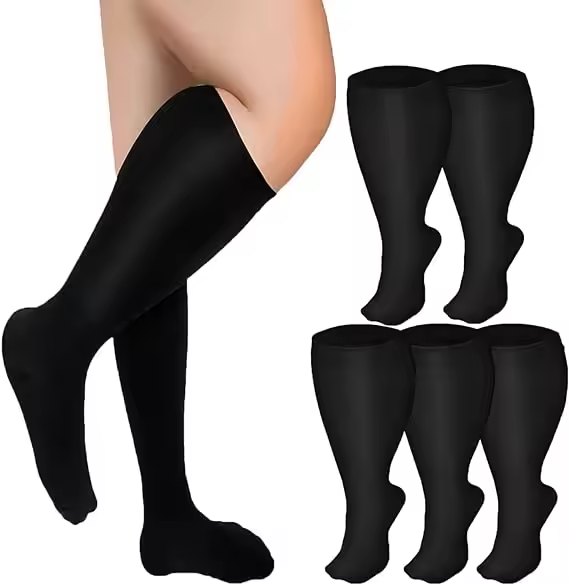 Alternatives to Compression Socks for Improving Sleep Quality
Alternatives to Compression Socks for Improving Sleep Quality
If you’re considering alternatives to enhance sleep without compression socks, there are several options to explore. Here are some effective methods:
Maintain a Regular Sleep Schedule
Set a fixed bedtime and waking time to regulate your body’s internal clock. Consistency aids in better sleep patterns.
Create a Restful Environment
Ensure your bedroom is quiet, dark, and cool. Use blackout curtains, eye masks, or earplugs if necessary.
Opt for Comfortable Bedding
Invest in a good mattress and pillows. Soft, breathable sheets can contribute to a more comfortable sleep.
Practice Relaxation Techniques
Engage in stress-reducing activities like yoga, meditation, or deep breathing exercises before bed.
Limit Screen Time
Reduce exposure to blue light from screens before sleeping. Blue light can disrupt the sleep cycle.
Regular Physical Activity
Exercise regularly, but not too close to bedtime. Physical activity promotes tiredness and can lead to deeper sleep.
Diet and Hydration
Avoid heavy meals, caffeine, and alcohol before bed. Drink water throughout the day to maintain hydration.
Consider Sleepwear
Choose loose-fitting, lightweight pajamas for comfort. This can prevent overheating during the night.
Leg Elevation
Elevate your legs with a pillow to reduce swelling and improve circulation, mimicking some benefits of compression socks.
Implementing these strategies can improve your sleep quality. Always consider seeking advice from a healthcare provider for persistent sleep issues.






